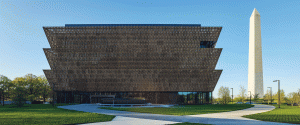Hello, everyone! Welcome to this week’s roundup of exciting opportunities.
Northeast
- Collections Manager & Registrar, Revolutionary Spaces (Boston, MA)
- Member Services Associate and Marketing Specialist, New England Genealogical Society (Boston, MA)
- Museum Educators, Community and Family Programs (Temporary), Studio Art Instructors, Member and Visitor Services Representative (Part-Time), Member and Visitor Services Representative (Full-Time), and Marketing and Digital Content Associate, Museum of Fine Arts (Boston, MA)
- Part-Time Museum Interpreter, Paul Revere House (Boston, MA)
- Development Assistant, John F. Kennedy Library Foundation (Boston, MA)
- Historical Interpreter/Actor, Boston Tea Party Ships & Museum (Boston, MA)
- Facilities Assistant, Somerville Museum (Somerville, MA)
- Programs and Communications Assistant, American Antiquarian Society (Worcester, MA)
- Studios Manager, MASS MoCA (North Adams, MA)
- Gallery Attendants, Rose Art Museum (Waltham, MA)
- Museum Coordinator, Public Health Museum (Tewksbury, MA)
- Director of Development, Springfield Museums Corporation (Springfield, MA)
- Education/Community Assistant, Fairfield Museum (Fairfield, CT)
- Adult Education Programs Coordinator, New Britain Museum of American Art (New Britain, CT)
- Vice President of Business Development and Marketing, Mystic Seaport Museum (Mystic, CT)
Mid-Atlantic
- Museum/Historic Site Supervisor, Delaware Division of Historical and Cultural Affairs (Newark, DE)
- Development Assistant for Campaign and Stewardship, Senior Manager of Talent Acquisition, Development – Senior Development Officer for Analysis and Reporting, and Senior Labor Analyst, Metropolitan Museum of Art (New York, NY)
- Assistant Registrar, Museum of the City of New York (New York, NY)
- Executive Director, New York City Fire Museum (Manhattan, NY)
- Curator, Chemung County Historical Society (Elmira, NY)
- Public Historian for Albany African-American History Project, Albany Institute for History & Art (Albany, NY)
- Director, Research & Collections Division, New York State Museum (Albany, NY)
- Curator of Education, Syracuse University Art Museum (Syracuse, NY)
- Director of Learning and Engagement, Everson Museum of Art (Syracuse, NY)
- Web Developer – Technology and Assistant Managers – Events and Rentals, Brooklyn Museum (Brooklyn, NY)
- Objects Conservator, Curator of Ancient Mediterranean Art, and Curator of European Art, Princeton University Art Museum (Princeton, NJ)
- Director of Education and Community Engagement, Grounds for Sculpture (Hamilton, NJ)
- Curator of the Guinness Collection, Morris Museum (Morristown, NJ)
- Community Engagement Manager, Taubman Museum of Art (Roanoke, VA)
- Director of Museum Operations, Science Museum of Virginia (Richmond, VA)
- Director of Marketing and Public Relations, George Mason’s Gunston Hall (Mason Neck, VA)
- Horning Chair Diversity, Equity, Access, and Inclusion and Marketing Manager, The Phillips Collection (D.C.)
- Director, Center for Art, Design & Visual Culture, University of Maryland Baltimore County (Baltimore, MD)
- Public Humanities Fellow – Commemorative to Enslaved Peoples of Southern Maryland, St. Mary’s College of Maryland (St. Mary’s City, MD)
- Senior Director of Education, Learning and Research, Children’s Museum of Pittsburgh (Pittsburgh, PA)
Southeast
- Director of School of Art Galleries and Collections, University of Tennessee Knoxville (Knoxville, TN)
- Director of External Relations, University of Tennessee Foundation (Knoxville, TN)
- Executive Director & CEO, Fish Art Museum (Nashville, TN)
- Museum Director, Ah-Tah-Thi-Ki Museum – Seminole Tribe of Florida (Clewiston, FL)
- Director, The Helis Foundation John Scott Center, Louisiana Endowment for the Humanities (New Orleans, LA)
- Senior Curator/Director of Programs, Louisiana State University (Baton Rouge, LA)
Midwest
- Director of Development, Historical Society of Michigan (Lansing, MI)
- Program Specialist, School Programs and Program Specialist, Digital Programs, Minnesota Historical Society (St. Paul, MN)
- Museum Consultant, Cincinnati Observatory (Cincinnati, OH)
- Museum Store Manager & Buyer, National Buffalo Museum (Jamestown, ND)
- Digital Assets Manager, Illinois State Museum Society (Springfield, IL)
- Director of Research and Interpretation, Abraham Lincoln Presidential Library & Museum (Springfield, IL)
- Internship – Digitization and Access, Auburn Cord Duesenberg Automobile Museum (Auburn, IN)
- Interpretation Services Manager, Conner Prairie Museum (Fishers, IN)
- Web Consultant, Spencer Museum of Art at the University of Kansas (Lawrence, KS)
- Curator of Education, History Nebraska (Lincoln, NE)
- Curator of Modern Art and Manager or Director of Interpretation, Joslyn Art Museum (Omaha, NE)
Southwest
- Educator/Interpreter (Program Specialist), Texas Historical Commission (Castroville, TX)
- Maintenance Manager, Bullock Texas State History Museum (Austin, TX)
- Manager of School and Educator Programs, Gilcrease Museum at the University of Tulsa (Tulsa, OK)
- Historic Site Superintendent, Wyoming State Parks & Cultural Resources (Laramie, WY)
- Museum Store and Visitor Experience Manager and Operations Manager, Harwood Museum of Art (Taos, NM)
West
- Executive Director, Port Townsend Marine Science Center (Port Townsend, WA)
- Executive Director, Columbia Gorge Discovery Center (The Dalles, OR)
- Malavalli Family Foundation Curator of Art of the Indian Subcontinent, Curator of Korean Art, and Director of Inclusion and Belonging, Asian Art Museum (San Francisco, CA)
- Chief Executive Officer/Executive Director, The Exploratorium (San Francisco, CA)
- Director of Learning and Partnerships, Institute of Contemporary Art San Francisco (San Francisco, CA)
- Manager of Diversity and Inclusion, Fine Arts Museum of San Francisco (San Francisco, CA)
- Director, Communications, Natural History Museum of Los Angeles County (Los Angeles, CA)
- Director of Exhibitions and Chief Curator, Mingei International Museum (San Diego, CA)








